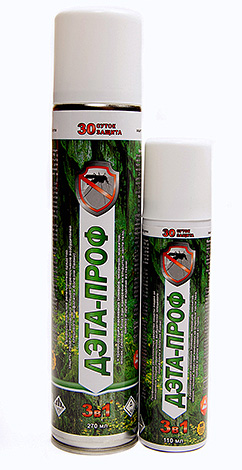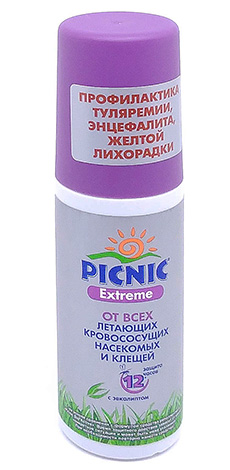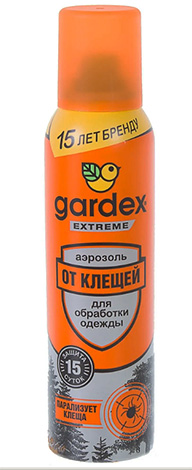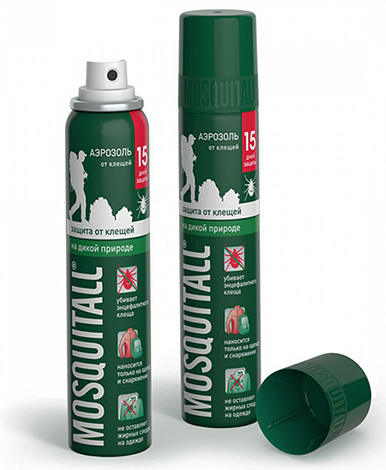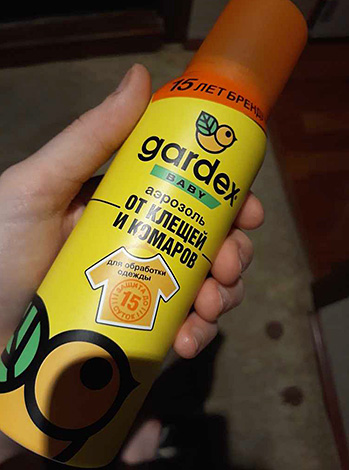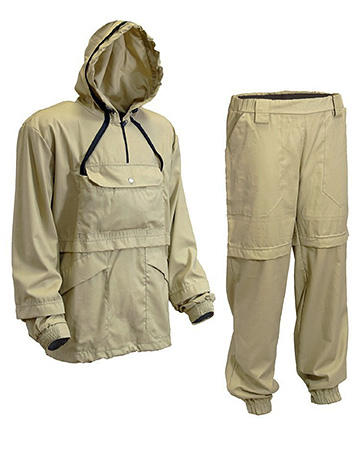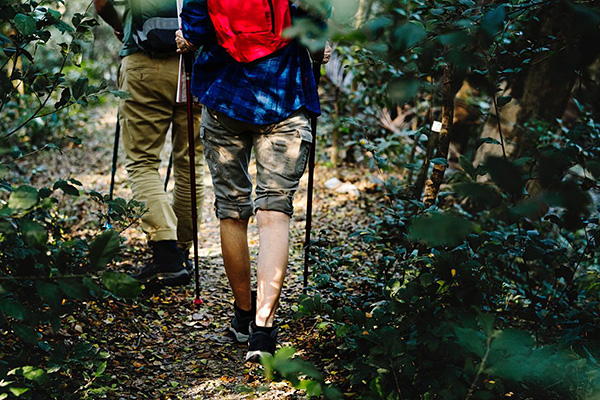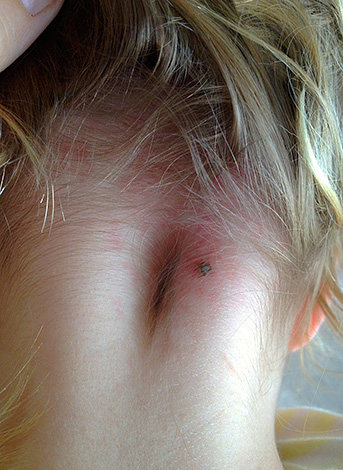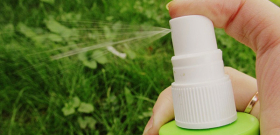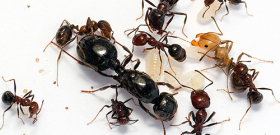
Aerosols and sprays are the best means of protection against ticks for people with relatively rare and short-term trips to nature. This is obvious: other means to prevent tick attacks are either too expensive or extremely inconvenient for use on a walk or on vacation.
For example, few people want to walk in the heat for an hour and a half in a city park, dressed in an anti-encephalitis suit and dressing their children in the same suits. And even more so, no one will go on a picnic and mow the grass for 2 hours at the place of the intended rest and treat it with acaricides.
In some cases, drastic measures are indeed rational. For example, on an expedition or during regular work in the taiga, an anti-encephalitis suit is preferable to tick sprays. And on a personal plot it is really more expedient to poison ticks once a year and then calmly relax and play with children on the lawn. But for episodic and short walks in nature, it is sprays and aerosols from ticks that are most suitable.
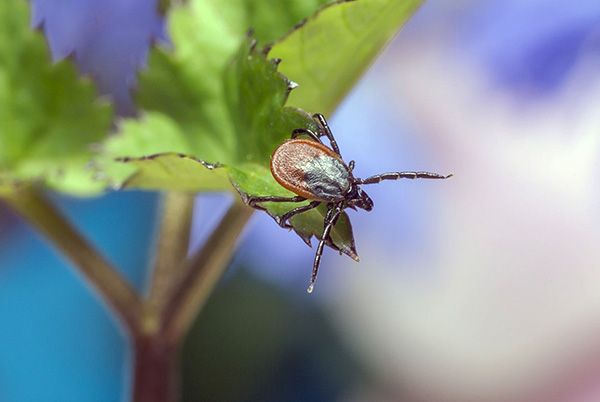
On a note
Spray and aerosol are not the same thing. For the consumer, the difference between them lies in the fact that when you press the spray valve in the case of a spray, a certain portion of the product is released (often they say - one “puff”).If you press the valve of an aerosol can, the jet will be released until the person removes their finger, or until the pressure in the can drops, whichever happens first.
This difference is a consequence of the design difference between spray and aerosol bottles. In the spray bottle, the pressure is equal to atmospheric, and the spraying of a portion of the solution is carried out by actuating the pump in the valve, and this pump is designed for a certain amount of "puff". In the aerosol canister, an excess pressure is maintained, which, when the valve is pressed, squeezes out the solution.
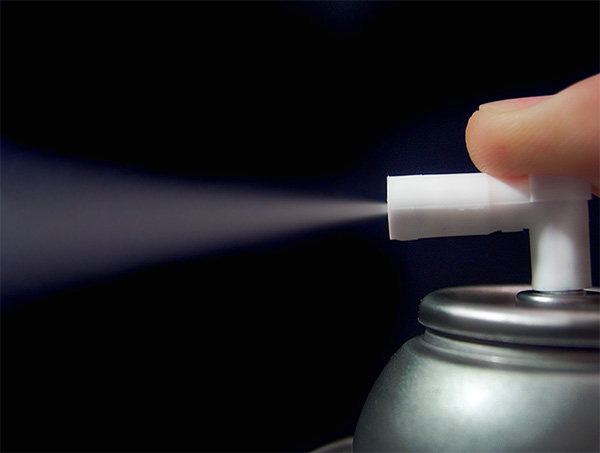
Next, we will talk about sprays, and about products in aerosol cans. The task of the consumer is to choose the best option among the variety of such means, which is best suited for protection against tick bites in one situation or another.
Basic rules for choosing a remedy for ticks
All effective sprays and aerosols from ticks are divided into three groups:
- Preparations based on repellents - substances that repel, but do not kill, blood-sucking arthropods. They can be applied to the skin (observing certain safety measures), as well as to clothing;
- Preparations based on acaricides - substances that kill ticks. In general, they protect against ticks more effectively than repellents. They can only be applied to clothing and equipment;
- Preparations with a mixture of repellents and acaricides. Functionally similar to acaricides, but considered more effective.
Most repellents contain DEET (diethyltoluamide), which effectively repels not only ticks, but also mosquitoes, horseflies, midges and other blood-sucking parasites.Acaricidal preparations are made on the basis of pyrethroids (most often alphacypermethrin, less often deltamethrin or permethrin), fipronil and some others.
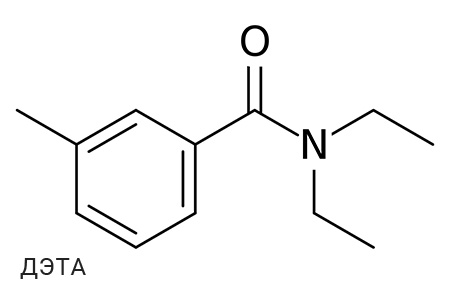
On a note
Protective products with a mixed composition usually contain DEET and one of the pyrethroids, less often - several different insectoacaricides.
Products with DEET do not kill ticks, but they are quite effective in repelling them. Previously, there was a generally accepted theory that DEET blocks the olfactory receptors in blood-sucking arthropods and, figuratively speaking, blinds them, which is why ticks, and with them mosquitoes, horseflies simply cease to be considered as a potential source of food for a person whose skin or clothing has been treated with a repellent .
Today, special studies have shown that DEET actually repels ticks and mosquitoes by irritating an entire group of receptors in these parasites.
Pyrethroids and organophosphorus compounds affect the nervous system of the tick and cause disturbances in muscle regulation. This is enough for the parasite to instinctively try to leave the treated tissue as quickly as possible (if it does not have time to do this, it will first be paralyzed and then die).

As a rule, the action of repellents and acaricides is manifested in the fact that the tick, clinging to clothing or skin and having crawled 15-20 cm here, disappears (or, in the case of acaricides, dies if it gets into a fold or a special catch pocket on clothes).
Mosquitoes, horseflies or midges do not even sit on the surface on which repellents are applied.
On a note
It is a mistake to assume that acaricides that kill ticks are always more preferable and effective than repellents that only repel them. These tools have different areas of application, and they are not completely interchangeable.In many cases repellents will be preferred over acaricides.
Means based on essential oils, which are marketed as the safest and designed specifically for children, are ineffective and can only be considered as toys for restless parents. Even relatively strong odors of such oils do not repel ticks.
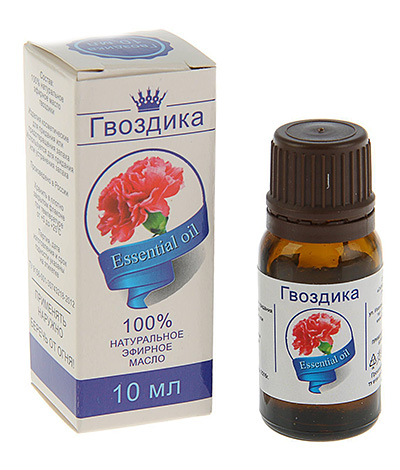
Similarly, you should not place high hopes on various folk remedies (ash, tar, petroleum jelly, kerosene, vanillin) and, moreover, on ultrasonic repellers. Among folk remedies, there are those that can reduce chance of being attacked by a parasite, but they certainly won't provide the kind of protection you can get with sprays and aerosols.
Ultrasonic repellers are completely useless and, in principle, cannot affect the behavior of the tick.
Of the really effective drugs for children under 12 years old, only drugs based on DEET are used (acaricidal drugs for babies are contraindicated). Children under one year of age are not allowed to apply any anti-tick preparations to the body, and for them protection is provided only with the help of properly fitting clothing and stroller protection.
When using any means, it is important to consider the duration of their action. At tick protection this is more critical than when protecting against mosquitoes. The fact is that if the product is "exhausted", a person will be bitten by 2-3 mosquitoes (in some areas - even through thin summer clothes), he will feel it and immediately apply a new layer of the drug. It is unacceptable to receive the same “signal” from ticks - the remedy must be updated before it stops scaring off parasites and they start to bite.
At the same time, acaricides on clothes and equipment retain repellent properties longer than repellents on the skin.Therefore, if somewhere there is an opportunity to put on light trousers and treat them with an appropriate agent, then it will be more reliable and easier than walking in shorts and applying an aerosol to the skin of the legs every 2-3 hours.
On a note
The shelf life of most tick products can be very long, since the active ingredients and excipients in their composition do not degrade in the bottle.
Using any tool, you must adhere to the safety requirements specified in the instructions for it. For example, none of the preparations for application to the body can be used continuously for more than 2 weeks, some cannot be applied to the body in principle, most of the products have a certain age limit, and when choosing such protection for a child, one must take into account his age.
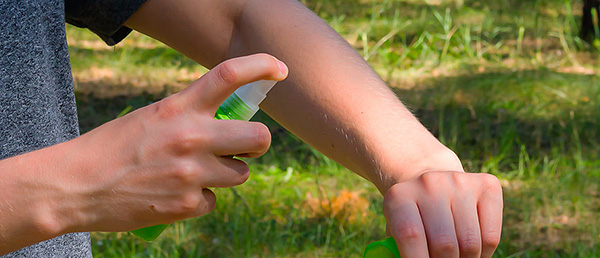
Now let's figure out how to choose the right tool for a particular situation.
Aerosol or spray: which is better?
You can easily distinguish an aerosol from a spray by the appearance of the container.
Aerosols are filled into metal cans similar to deodorant cans, usually even with similar removable caps. The photo below shows an example of such a tool:

Sprays are often sold in plastic bottles with a narrow cap. For example, in these:
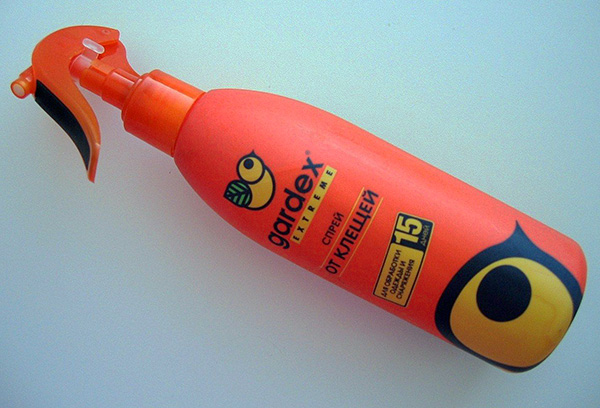
Aerosols are easier to apply to surfaces, they can be sprayed faster and easier on, for example, a jacket or trousers, and they are easier to apply over a large area.
On a note
Interestingly, the most powerful tick preparations are often produced in aerosol form, and in the form of sprays you can usually buy delicate and children's products. But this is not a strict rule, and individual "killer" drugs are often sold in the form of a spray.
Sprays are good because they usually last for a longer period, and for several reasons:
- Due to the portioned supply, it is easier to avoid overspending;
- There is no propellant in the bottle that takes up additional volume (propellant is a substance that creates increased pressure in the balloon);
- The vial itself is usually transparent, which eliminates the possibility of "underfilling" (aerosol manufacturers sometimes report the exact volume as a competitive advantage, hinting that other preparations contain 20-30% less than the declared volume);
- The entire drug is consumed from the vial (in the aerosol can, after pressure equalization, a part of the agent remains, which is simply not released through the sprayer).
In aerosol cans, the spraying mechanism is generally less reliable than in sprays, and sometimes this turns out to be an unpleasant surprise - directly in nature it is not possible to use the agent from a full, just started canister.
But perhaps the main difference is that aerosol cans are explosive. They maintain excess liquid pressure, and theoretically, when such a cylinder is heated by sunlight or near a fire, it can explode. Spray bottles are not afraid of heating in the sun.
This means that it is advisable to use aerosols at home when preparing clothes or equipment for a hike. Here, in a calm environment, you can evenly spray the aerosol onto the fabric, let it dry and then be protected in nature.
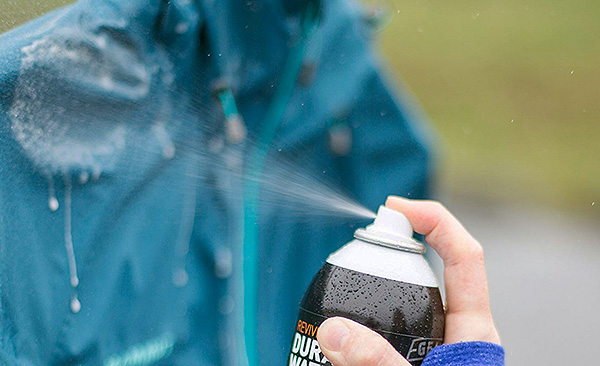
On nature, an aerosol should be taken with you in two cases:
- In a multi-day separation from civilization, when additional processing of clothing or equipment may be required every few days or weeks (the term of the protective effect of aerosols on clothing is from 2 to 14 days);
- When frequent treatment of large areas of the body is required. For example, it is known that a one-day excursion will take place in very hot weather and ford a large number of water barriers. That is, it is obvious that you will have to go in shorts and often you will need to cross streams and shallow rivers. In this case, the product will be quickly washed off the skin, and after each stream, all legs from the ankles to the hips will need to be quickly sprayed with the product.
Be that as it may, it is necessary to ensure that the aerosol can is not placed in direct sunlight or near a fire.
In situations where it is supposed to walk in trousers and long-sleeved clothes, and the stay in nature will be short - no more than 2-3 days - sprays are quite suitable. They are easy to apply on the face and hands, while they are more economical and safer.

We conclude: it is better to take aerosols with you on long hikes and expeditions, while sprays are more suitable for walks in parks and picnics.
We evaluate the composition of the product
Choosing a remedy for ticks by the active substance is even easier than by the form of packaging. For short walks and picnics in nature, it is advisable to use preparations based on DEET - they are safer and at the same time have high efficiency, they can be used with any clothing and with any area of open areas of the body.
The main critical drawback of DEET is the rapid loss of the repellent activity of the drug. When applied to the skin in the summer, it lasts for 2-3 hours, when processing clothes - up to 5-6 hours (depending on the concentration of DEET in the product itself). And the need to control these periods and regularly apply new portions of the drug can be somewhat burdensome.
Preparations with acaricides in the composition (including those with a mixed repellent-acaricidal composition) are deprived of this shortcoming - they retain a repellent and poisonous effect on clothing and equipment for up to several days, and the most powerful agents - for more than a week.
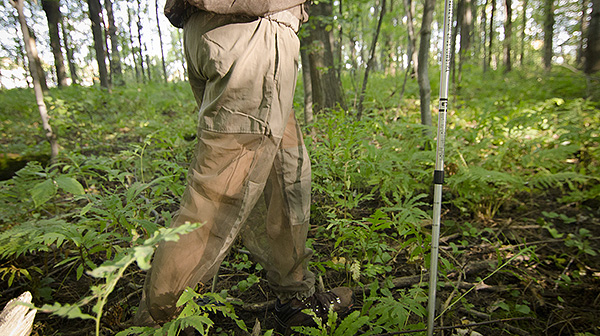
However, they can no longer be applied to the body, and therefore they are only suitable for those outings in which a person is dressed, at a minimum, in trousers and socks. In summer, in tick season, this does not always happen.
Therefore, for a walk in the park, for a short excursion or a picnic in the bosom of nature, it is advisable to take funds based on DEET. Preparations with acaricides are already “heavy artillery” for fishing, hunting, long hikes, expeditions, long work (including rotational work) in the field.
It is also necessary to look at the concentration of the active substance. Preparations with DEET contain it at a concentration of 5 to 35%. Minimum concentrated products are purchased for children under 3-5 years old, while for adults, for long-term use in heavily ticked areas, it is advisable to choose products with a maximum repellent content.
On a note
Most baby sprays against ticks, according to the instructions, are prohibited from being applied to the body, even if the content of repellents in them is low. Therefore, DEET is often enhanced with pyrethroids in them, since it is assumed that the drug will only be applied to clothing anyway.
Acaricides, on the other hand, are added to tick remedies in amounts of less than 1% - this is enough to repel ticks and maintain the safety of using the remedy.
Sprays and aerosols based on DEET
DEET is found in a wide range of tick repellents. The most popular ones are listed below:
- DETA-Prof is an aerosol with a DEET concentration of 30%, used mainly by fishermen and hunters in the taiga. The price of a 110 ml bottle is about 200 rubles;

- Picnic Extreme is 26% DEET and should not be used on children's skin, but is approved for use on children's clothing and adults. The cost of a 100 ml bottle is about 150 rubles. The Clean House and Picnic Bio Active are similar to it. Both products remain active on clothes for up to 8 hours;

- Gardex Extreme is a drug similar to the previous one. Contains 31% DEET, not intended for children, suitable for adult skin application and on clothing and equipment. One bottle of Gardex Extreme costs about 200 rubles;

- Off Extreme and Reftamid are analogues of DETA-Prof with a DETA content of 30%. They cost about 150 rubles for a 100 ml Off bottle and 200 rubles for a 150 ml bottle of Reftamid. Reftamid, by the way, is produced in the "taiga" format in a 200 ml bottle;


As you can see, all these products are characterized by a high content of repellent, they are designed for use by adults in heavily tick-infested areas.
For children, an analogue of DEET-based products is Picnic Baby with ethyl butylacetylaminopropionate (IR 3535) - the safest repellent on the market.
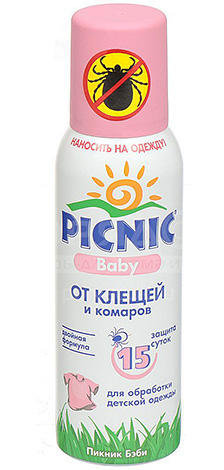
The drug can be applied to the skin of children from 1 year old, in terms of effectiveness it is almost similar to products with DEET, but much less toxic. Its price is about 250 rubles for a 100 ml spray bottle.
Preparations for ticks with acaricides
Most of these sprays and aerosols contain small amounts of acaricides, which, nevertheless, are quite enough to repel ticks and to kill them if the parasite gets into special trap pockets in anti-encephalitis suits.
For example:
- Picnic Family Reinforced (aka Picnic Super Antimite) is an aerosol based on imiprotrin (0.16%) and alphacypermethrin (0.2%). The price of a 125 ml bottle is about 150 rubles. It is intended only for application to clothes, where, according to the manufacturer, it retains its activity for up to 15 days (in fact, you can count on 3-4 days of reliable protection, provided that the clothes do not get wet from the rain);
- Breeze Antiklesch is a drug based on alpha-cypermethrin (0.25%), a bottle of which costs about 200 rubles per 110 ml. Produced by the same manufacturer as DETA-Prof;
- Komaroff Antiklesch, spray with slightly less alpha-cypermethrin (0.2%). This is one of the most inexpensive drugs - a 125 ml bottle costs about 100 rubles;
- Taiga tick spray with 0.17% alpha-cypermethrin. The price of a 125 ml bottle is about 100 rubles;
- Belarusian Ozz aerosol with 0.24% alpha-cypermethrin.
All these products contain fragrances, but it is difficult to say that their smell is pleasant. For example, in Komaroff Antiklesch there is a mint flavor, in Picnic Family Enhanced there is a eucalyptus fragrance, but the smells of these preparations are rather repulsive.

All these products are used only for processing clothes. If from time to time it is necessary to treat open areas of the body, then products based on DEET are additionally used for application to the skin, without the addition of acaricides.
On a note
Also, with acaricides, products are produced to protect animals from ticks.For example, these are Finprist with fipronil, Bolfo Spray from Bayer and many others. They work well to prevent tick bites in dogs and cats, but they are not intended for people.
Sprays with a mixed repellent-acaricidal composition
From a practical point of view, these preparations are similar to those containing only acaricides. Due to the presence of the latter in the composition, they can only be used for application to clothing, but it is assumed that, due to the multicomponent composition, they repel ticks more effectively than monopreparations (in practice, it is difficult to notice any difference).
This group includes:
- Spray and aerosol Mosquitol from ticks. They contain 7% DEET and 0.2% alpha-cypermethrin in the composition, designed specifically to protect against blood-sucking parasites on short walks and picnics. Their analogues are Kleshch-Kaput aerosol at a price of about 150 rubles per 125 ml bottle and Gardex Naturin at 200 rubles per 100 ml bottle;

- Attack - according to several ratings, the most effective tick spray for humans in general (which, however, is somewhat doubtful). Contains 15% DEET and 0.27% alpha-cypermethrin, its price is about 200 rubles per 100 ml bottle;

- The Killing Power Anti-Mite is from the same manufacturer that makes the Mosquitall and Picnic products. Contains 5% DEET and 0.2% alpha-cypermethrin, costs about 150 rubles for a 150 ml bottle. Its analogue is Moskill aerosol with a price of 150 rubles per 100 ml bottle;

- Gardex Baby with 8% DEET and 0.2% alpha-cypermethrin in the composition;

- Spray Tornado with 10% DEET and 0.25% alpha-cypermethrin. It costs about 150 rubles for a 100 ml bottle.

As you can see, all these drugs are generally similar to each other, although some other drugs on the market may have a different composition, in particular, contain other pyrethroids.However, they will be about as effective.
Such products are applied only to clothing or equipment; they cannot be treated with skin or hair.
Rules for the use of funds, including in children
Regardless of the composition of the drug, it is necessary to ensure that it does not get on the mucous membranes of the nose, eyes and mouth, in the respiratory tract and in the digestive tract. When applying the product to the skin or clothing, you need to direct the balloon away from the face, and if the product is sprayed on the face to protect against mosquitoes, then it is necessary to hold your breath at the time of spraying the solution, close your mouth and eyes. After spraying, the product must be wiped off the eyebrows so that it does not get into the eyes.
All drugs with repellents and acaricides have their own limitations on the duration of continuous use.
For example, products with DEET should not be used continuously, without rinsing off the body, for more than 2 weeks in a row. Studies and reviews show that with prolonged contact with the skin, the substance can lead to disorders of the nervous system. If such preparations are used on a camping trip or in field work in expeditionary conditions, then before going to bed they must be washed off the skin so that the skin “rests” from the remedy all the time of sleep in a shelter protected from ticks.

Means based on pyrethroids, if used incorrectly, if they get on the skin and, especially, in the respiratory tract, can cause poisoning.
Pregnant women are not recommended to apply mite sprays to the body, but it is quite possible to use preparations for application to clothes.
Children under one year old should not be allowed to apply any funds either on the body or on clothes.But they, in general, do not need classic protection against ticks - they do not crawl on the grass on walks, they do not visit tick-borne places, and you can protect the stroller from parasites by treating its legs and wheels with any acaricidal preparation.
In any case (and when using any remedy), any undesirable manifestations on the part of the body on the drug require the immediate cessation of its use. Red rash, frequent uncontrollable sneezing, severe itching, pain, dermatitis, symptoms of poisoning - all this is a reason to immediately wash off the remedy from the body and remove the clothes that it has treated. You can protect yourself from ticks in other ways, so you should not risk a strong deterioration in well-being.
Additional easy and free ways to protect yourself from ticks
Relying only on means against ticks in nature should not be: they provide, although high, but not absolute protection against parasite bites. A good example: you can apply the product on your feet, then walk on the grass with dew and wash it off safely in 5-10 minutes. And after fifty meters pick up a bloodsucker in the same grass.
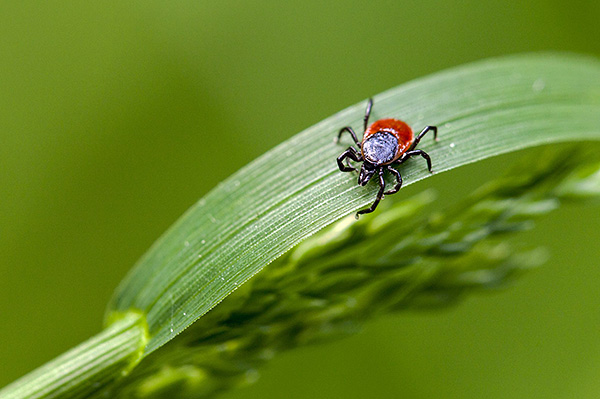
Also, there is always a risk that the product will remain at home, or it is on a walk that the sprayer will fail ...
In such situations, and in general, wherever ticks live, it is useful to take measures to minimize the likelihood of meeting a bite. For this:
- Should be avoided whenever possible tall grass areas and trails, along which animals often move;

- It is recommended to go out into nature in a suit that covers the arms and legs as much as possible. If the weather is not very hot, then you can put on socks and tuck your trousers into them, and tuck a T-shirt or shirt into your trousers. If the trousers cannot be tucked into socks, it is better to walk in shorts.On the legs under them, it is easier to notice a crawling parasite than to constantly roll up the trousers and inspect the legs. If possible, it is useful to use anti-encephalitis suits - they are light, “breathe” and reliably protect against ticks;

- In any case, on a walk every 5-10 minutes you need to examine your legs. Ticks are not fast creatures, even after getting on the skin, the parasite will crawl here for a long time, looking for a place to suck. If every 5-10 minutes to cast a glance at the legs, then the parasite can be noticed even before suction and take off;

- With a long stay in nature, 2-3 times a day, it is recommended to conduct mutual examinations of the body so that another person can examine the back, neck, nape and remove ticks that otherwise might go unnoticed;

- On camping trips and expeditions, you should spend the night in tents with mosquito nets or, at a minimum, in bivouac bags.

The practice of many tourists, fishermen and hunters shows that if these measures are followed, one can stay in the taiga or in a tick-infested forest-steppe for weeks and safely avoid tick bites.
An interesting example of testing a remedy for ticks

